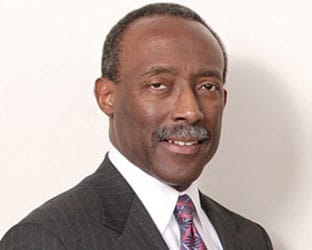During the Q&A session after the Global Media Agency Panel at the NABOB (National Association of Black Owned Broadcasters) Conference last week, Jim Winston, the organization’s Executive Director and General Counsel asked a question to the media buyers: “Would you consider looking at a new, ‘NABOB Network’ if it were offered to you?”
RBR-TVBR spoke to Winston after the conference was over to get some of the details. Here’s what we asked:
The NABOB Network could mean a lot of things. Certainly we’d see a lot of broadcasters interested in providing inventory.
“Yes, and there’s actually a history for it. Last year, about this time, the Office of the Comptroller of the Currency had completed its investigation of the big mortgage companies—JP Morgan Chase, Wells Fargo, Bank of America—and concluded that they had engaged in improper mortgage activities and directed them to advise the public (anyone who had received a mortgage from them that had gotten into trouble) to contact the Federal government to get an independent foreclosure review if their mortgage had been foreclosed upon. Well the mortgage companies did a public education campaign and virtually no one contacted the Office of the Comptroller of the Currency. They didn’t publicize it correctly. So they were directed to publicize it again, and at the urging of Congresswoman Maxine Waters, they contacted NABOB. So NABOB out together a NABOB Network for them to advertise the program and they got a much better response than they got the first time. Apparently, the biggest beneficiary of the first campaign was People Magazine.
So we did a NABOB Network buy last year at this time—that was part of the stimulus for me realizing that NABOB needs to have a Federal government advertising push. It was clear to me that the Federal government does not know about the potential of a NABOB Network, and we have tried to work on that ever since. We want to get it into a permanent cycle within the Federal advertising budget.”
A NABOB Network might be very useful in the commercial side as well—and that’s why you brought it up at the panel session.
“We are working that side as well. Thus far, we have not been able to crack the commercial side for a NABOB Network buy.”
The buyers had replied that they would like to see the details of such a network if it were complete and ready for consideration. So what is the level of interest from NABOB constituents? Are they ready to dedicate inventory to it?
“The answer is yes, there is inventory available. There are very few sold out stations in America—nobody needs to dedicate inventory. So we’re pretty sure that once we get an advertiser to commit, we’ll be able to provide them the inventory that they want in all of our NABOB markets.”
Would this be done through an existing network such as American Urban Radio Networks (AURN) or separately on its own via NABOB?
“We have been approaching it both ways. I have spoken directly with AURN about this and they are very interested in participating. What we’re going to do, of course, is take a sensible approach because national advertisers never make a buy without consulting with their ad agencies. And ad agencies have their own techniques and tastes about how radio should be bought. So we anticipate that in some instances we will be able to do a local station and an AURN combined buy. AURN, Reach Media…I suspect there are going to be a lot of potential configurations. Our view is to keep it flexible and work with the ad agencies to give them the network buys that they’re comfortable with.”
In response to a request from NABOB, Congressman Hank Johnson of Georgia added language to the House Report on the Defense Authorization Bill encouraging the Department of Defense to make greater use of radio in its commercial advertising expenditures. The language added by Congressman Johnson at pages 181-182 of the House Report reads:
Use of Radio in Department of Defense Advertising
“The Department of Defense spent $450.1 million in advertising in fiscal year 2012. The focus of the Department’s commercial advertising expenditures were recruiting and reaching influencers. A review of the advertising expenditures shows that the Department spends less than 2 percent of its advertising budget on radio, compared to the 10.1 percent the average national commercial advertiser usually spends. Radio reaches 92 percent of all Americans each week. Thus, the broad reach of radio makes it an effective media vehicle to utilize to reach both recruits and influencers. Radio reaches diverse racial and ethnic communities in our Nation, because there are many stations and networks that target these diverse communities. The committee encourages the Department to examine its commercial advertising expenditures to determine whether greater utilization of radio to reach a larger target audience among diverse communities would be cost-effective.”
Congressman Johnson added the language to the Defense Authorization Bill Report after NABOB shared with the Congressman the Congressional Research Service (CRS) report showing that the federal government spent $750.4 million on commercial advertising services in fiscal year 2011. The CRS lists the top five departments as follows:
The Department of Defense: $473.6 million
The Department of Health and Human Services: $87.6 million
The Department of the Treasury: $50.6 million
The Department of Transportation: $36.7 million
The Department of Homeland Security: $34.7 million
Of these expenditures, Black owned broadcast stations and networks receive a very small share. Many Black owned broadcast stations receive no federal ad dollars.
RBR-TVBR observation: The connection that radio has with multicultural and African American listeners remains very strong—stronger than general market. There is a lot of loyalty from listeners of Hispanic and Urban stations—especially with the air talent. That was what we heard from the agencies at the conference, and that translates well to social media.





